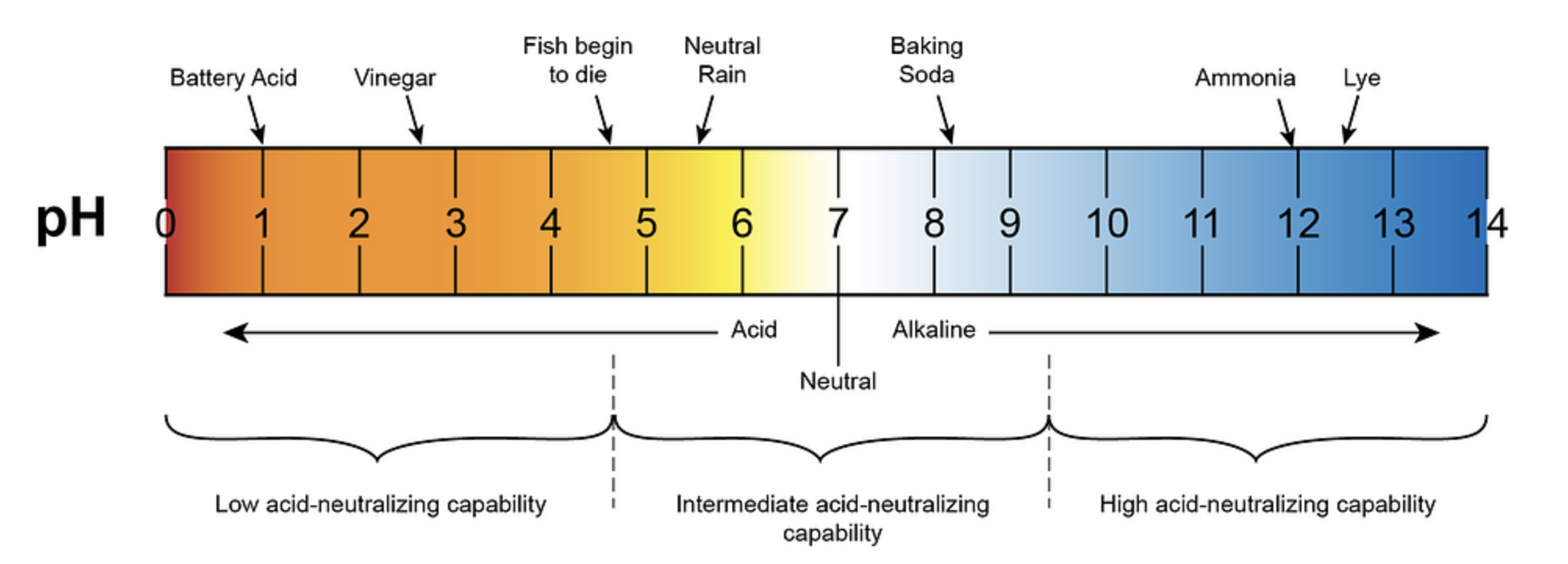The pH of a weak base in water is a crucial factor to consider in various chemical and biological processes. This article will delve into the intricacies of calculating the pH of weak bases in water, the factors that can influence it, and the methods used to manage any potential contaminants or substances that may affect the pH.
Understanding the pH of Weak Bases in Water
The pH of a weak base in water can be calculated using the formula pH = 14 – pOH, where pOH is the negative logarithm of the hydroxide ion concentration (OH-). The hydroxide ion concentration can be determined using the base dissociation constant (Kb) and the concentration of the weak base.
Let’s consider an example of a 0.1 M solution of ammonia (NH3), a weak base with a Kb of 1.8 x 10^-5. The reaction of ammonia with water can be written as:
NH3(aq) + H2O(l) ⇌ NH4+(aq) + OH-(aq)
The equilibrium constant expression for this reaction is:
Kb = [NH4+][OH-] / [NH3]
By rearranging this equation, we can solve for [OH-]:
[OH-] = Kb[NH3] / [NH4+]
Since the concentration of NH4+ is small compared to the concentration of NH3, we can assume that the reaction has not gone to completion and use the initial concentration of NH3 to calculate [OH-].
[OH-] = (1.8 x 10^-5)(0.1) / (x)
Where x is the concentration of NH4+ at equilibrium. Since the reaction has not gone to completion, x will be small compared to 0.1. We can approximate that [NH4+] = x and solve for [OH-].
[OH-] = (1.8 x 10^-5)(0.1) / (1 x 10^-7) = 1.8 x 10^-4 M
Now we can calculate the pOH and pH:
pOH = -log([OH-]) = -log(1.8 x 10^-4) = 3.74
pH = 14 – pOH = 14 – 3.74 = 10.26
Therefore, the pH of a 0.1 M solution of ammonia is approximately 10.26.
Factors Affecting the pH of Weak Bases in Water
The pH of a weak base in water can be influenced by various contaminants or substances, including:
- Strong Acids or Bases: The presence of strong acids or bases can react with the weak base and change its concentration, affecting the pH.
- Heavy Metals: Heavy metals can interact with the weak base, altering its concentration and the resulting pH.
- Organic Compounds: Organic compounds can also react with the weak base, leading to changes in the pH.
Managing Contaminants and Maintaining pH
To deal with these contaminants and maintain the desired pH of a weak base in water, various water treatment methods can be employed:
- Filtration: Mechanical filtration can remove particulate matter and some dissolved contaminants, helping to maintain the pH.
- Ion Exchange: Ion exchange resins can selectively remove or exchange ions, including those that can affect the pH.
- Chemical Precipitation: Precipitation of unwanted ions or compounds can be used to remove them from the water, preserving the pH.
Conclusion
The pH of a weak base in water is a crucial parameter that must be carefully monitored and maintained. By understanding the principles of calculating the pH, identifying the factors that can influence it, and employing appropriate water treatment methods, you can ensure the optimal pH for your specific application.
References:
- Calculating pH of Weak Acid and Base Solutions. (n.d.). Chemistry LibreTexts. Retrieved April 27, 2024, from https://chem.libretexts.org/Bookshelves/Introductory_Chemistry/Introductory_Chemistry_%28CK-12%29/21:_Acids_and_Bases/21.15:_Calculating_pH_of_Weak_Acid_and_Base_Solutions
- How to Calculate the pH of a Weak Base Solution | Chemistry | Study.com. (2021, September 10). Study.com. Retrieved April 27, 2024, from https://study.com/skill/learn/how-to-calculate-the-ph-of-a-weak-base-solution-explanation.html
- Calculating pH of Weak Acid and Base Solutions | CK-12 Foundation. (2023, February 20). CK-12 Foundation. Retrieved April 27, 2024, from https://flexbooks.ck12.org/cbook/ck-12-chemistry-flexbook-2.0/section/21.15/primary/lesson/calculating-ph-of-weak-acid-and-base-solutions-chem/.

